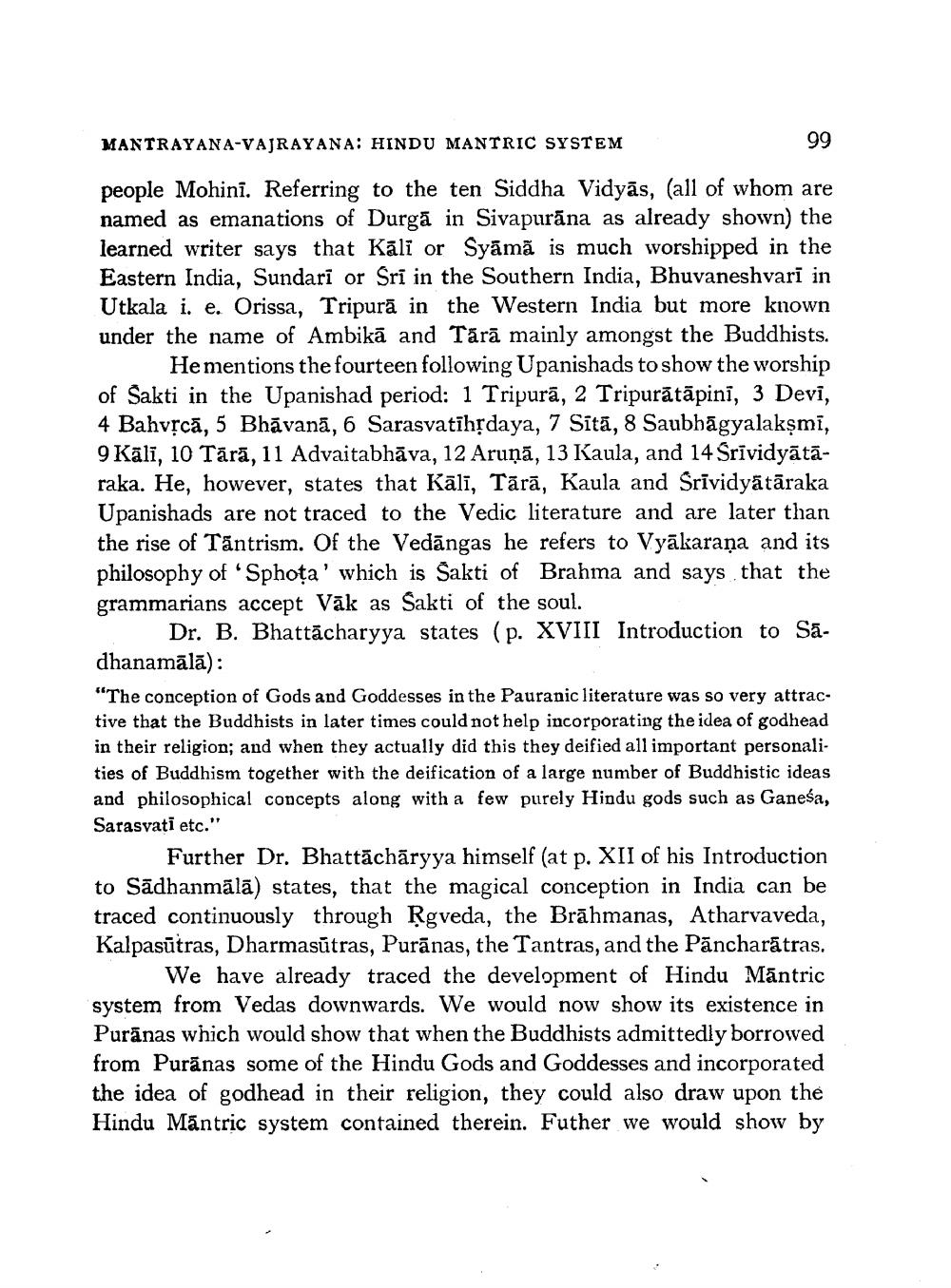________________
MANTRAYANA-VAJRAYANA: HINDU MANTRIC SYSTEM
99
people Mohini. Referring to the ten Siddha Vidyās, (all of whom are named as emanations of Durga in Sivapurāna as already shown) the learned writer says that Kāli or Syāmā is much worshipped in the Eastern India, Sundari or Sri in the Southern India, Bhuvaneshvarī in Utkala i. e. Orissa, Tripurā in the Western India but more known under the name of Ambikā and Tárā mainly amongst the Buddhists.
Hementions the fourteen following Upanishads to show the worship of Sakti in the Upanishad period: 1 Tripurā, 2 Tripurātāpinī, 3 Devī, 4 Bahvịcā, 5 Bhāvanā, 6 Sarasvatihțdaya, 7 Sītā, 8 Saubhāgyalakşmi, 9 Kālī, 10 Tārā, 11 Advaitabhāva, 12 Aruņā, 13 Kaula, and 14 Srividyātāraka. He, however, states that Kālī, Tārā, Kaula and Srividyātāraka Upanishads are not traced to the Vedic literature and are later than the rise of Tantrism. Of the Vedāngas he refers to Vyākaraṇa and its philosophy of 'Sphota' which is Sakti of Brahma and says that the grammarians accept Vāk as Sakti of the soul.
Dr. B. Bhattācharyya states (p. XVIII Introduction to Sādhanamālā): "The conception of Gods and Goddesses in the Pauranic literature was so very attractive that the Buddhists in later times could not help incorporating the idea of godhead in their religion; and when they actually did this they deified all important personalities of Buddhism together with the deification of a large number of Buddhistic ideas and philosophical concepts along with a few purely Hindu gods such as Ganesa, Sarasvati etc."
Further Dr. Bhattāchāryya himself (at p. XII of his Introduction to Sādhanmālā) states, that the magical conception in India can be traced continuously through Rgveda, the Brāhmanas, Atharvaveda, Kalpasūtras, Dharmasūtras, Purānas, the Tantras, and the Pāncharātras.
We have already traced the development of Hindu Mántric system from Vedas downwards. We would now show its existence in Purānas which would show that when the Buddhists admittedly borrowed from Purānas some of the Hindu Gods and Goddesses and incorporated the idea of godhead in their religion, they could also draw upon the Hindu Mantric system contained therein. Futher we would show by




